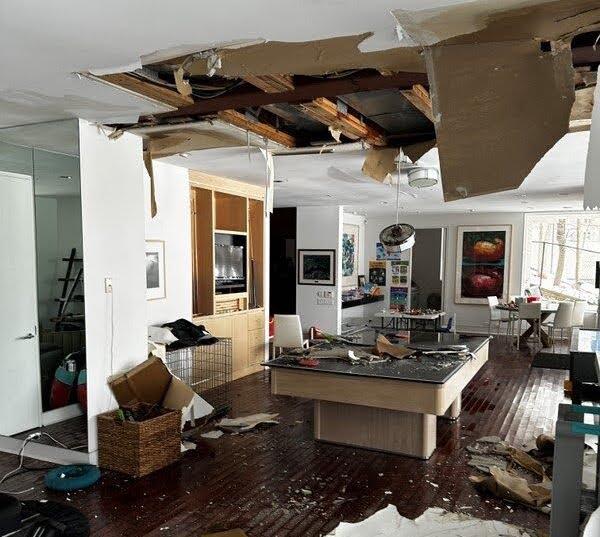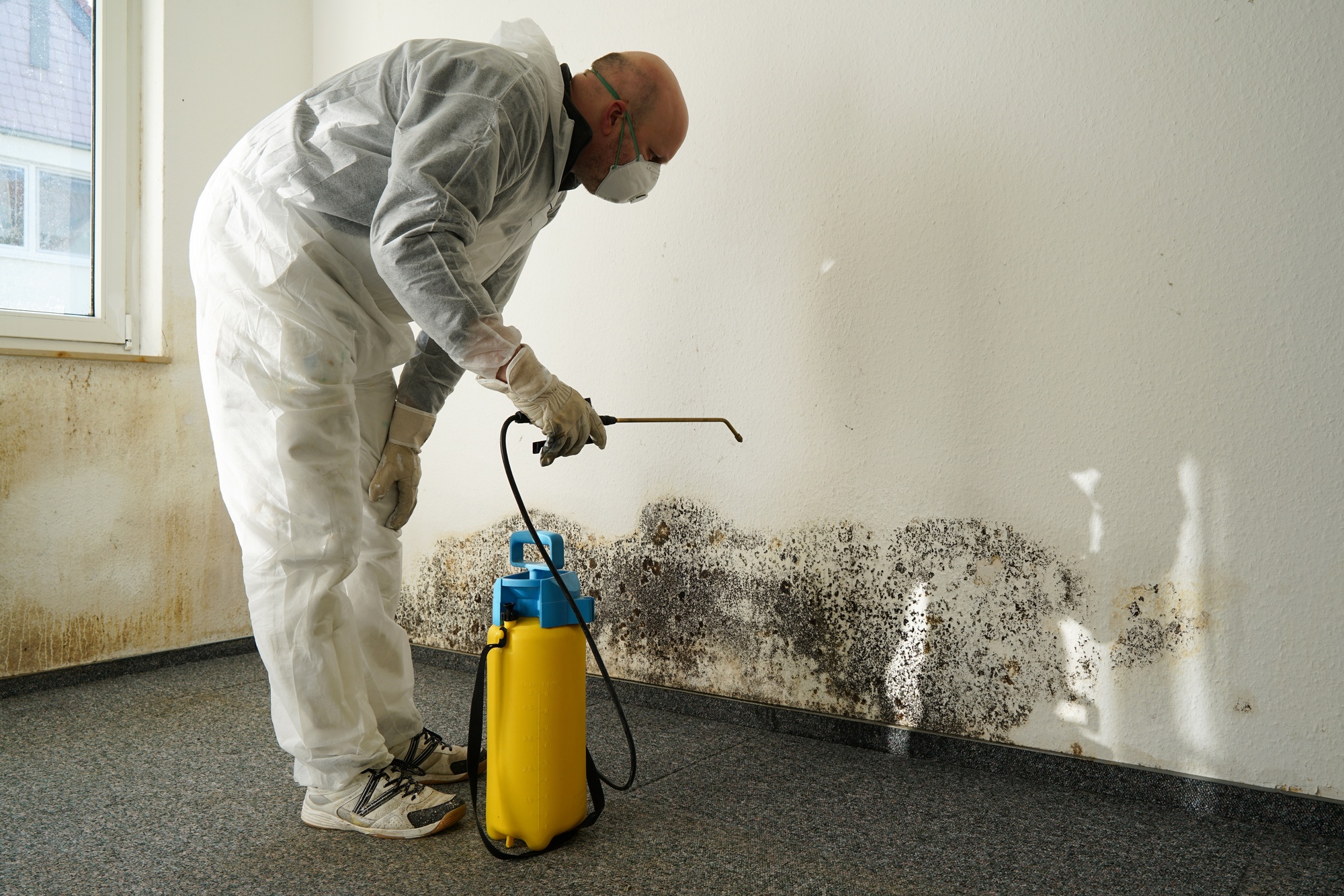Leading Water Mitigation Company Offering Fast and Efficient Solutions
The Process of Water Damages Cleanup: Guaranteeing Your Home Is Brought Back Efficiently
Water damages can be an overwhelming challenge for house owners, necessitating a organized and thorough cleanup process to restore security and capability. damage restoration services. Following this, reliable water removal strategies play a crucial duty in reducing further harm.
Evaluating the Damage
Upon discovering water damage, the initial step is to extensively analyze the extent of the impact. This first analysis is critical, as it helps determine the needed actions for efficient cleanup and restoration. Begin by examining the affected locations, consisting of walls, ceilings, floors, and personal items, to determine the resource of the water intrusion, whether from flooding, leaks, or condensation.
Documenting the damages is vital for both insurance coverage claims and intending repair efforts - damage restoration services. Usage pictures and composed notes to record the seriousness of the damage, keeping in mind any type of afflicted structural aspects and products. Pay special interest to areas that may not be quickly noticeable, such as behind walls and under carpets, as concealed dampness can result in more complications, consisting of mold and mildew growth
Furthermore, analyze the timeline of the water direct exposure. Eventually, a thorough assessment lays the foundation for an effective water damages clean-up process, making certain that all affected locations are attended to effectively and completely.
Water Extraction Methods

Specialists usually utilize completely submersible pumps for larger quantities of water, which can promptly relieve flooding in basements or other impacted areas. For smaller sized quantities, wet/dry vacuums are usually used to draw out residual dampness from rugs and difficult surface areas. In addition, making use of portable extractors permits for targeted elimination in restricted rooms or areas with delicate products.
In circumstances of contaminated water, such as sewage or floodwater, progressed removal techniques might involve using biohazard equipment to make sure security and compliance with health and wellness guidelines. High-powered removal tools are essential in lessening water retention in architectural materials, which can result in mold growth and architectural deterioration otherwise addressed without delay.
Inevitably, the effectiveness of water removal techniques plays an essential role in the general success of the water damage cleanup process, preparing for subsequent restoration initiatives.
Drying and Dehumidification
Once standing water has actually been successfully extracted, the following important phase in the water damages clean-up process is drying out and dehumidification. This step is vital to protect against more damage and mold and mildew growth, which can take place within 24 to two days in damp atmospheres.
To achieve efficient drying out, specific equipment such as industrial-grade air moving companies and dehumidifiers is employed. Air moving companies circulate air across damp surfaces, improving dissipation rates, while dehumidifiers decrease moisture levels airborne, advertising a conducive atmosphere for drying. The combination of these devices ensures that wetness is attracted out from floorings, walls, and furnishings, permitting them to dry completely.
It is important to keep track of the drying procedure very closely. Specialists typically make use of dampness meters to assess the moisture material in different products, making sure that all influenced locations get to appropriate dry skin levels. This careful approach helps to stop concealed wetness pockets that can lead to structural damage or unhealthy mold and mildew development.

Cleansing and Disinfecting
After the drying out and dehumidification phase is full, the following essential action in water damages clean-up is cleaning and disinfecting the influenced locations. This process is important to avoid the growth of mold, microorganisms, and various other microorganisms that prosper in moist settings.
The cleansing phase usually involves getting rid of any type of particles, dirt, and contaminants from surface areas making use of specialized cleaning up agents. For tough surface areas, a combination of soap and water or commercial cleansing products is frequently used. Soft materials, such as furniture and carpets, may require extra substantial cleansing techniques, consisting of steam cleansing or deep removal methods, to make sure comprehensive hygiene.

Disinfecting complies with cleansing, utilizing EPA-approved disinfectants to eliminate hazardous bacteria. This step is vital, especially in locations that may have entered call with floodwaters or sewer, as these resources can posture major health and wellness dangers.
Furthermore, it is vital to address any type of remaining smells, which might need using odor neutralizers or innovative strategies like ozone therapy. Proper cleaning and disinfecting not only recover the safety and hygiene of your home however additionally prepared for successful reconstruction and repairs in subsequent stages of the water damages cleanup procedure.
Reconstruction and Repair Work

When the evaluation is full, reconstruction efforts can start. Additionally, floor covering may require comparable attention, depending on the level of water exposure.
It is vital to involve seasoned reconstruction experts during this process, as they possess the proficiency to handle intricate repair work properly. Furthermore, they can aid mitigate possible future concerns, such as mold and mildew development or structural instability, thus making certain a habitable and secure living atmosphere. Inevitably, reliable remediation and repair work recover the home's honesty and improve its overall worth.
Conclusion
To conclude, the procedure of water damage clean-up is essential for bring back a home to its pre-damage problem. Each stage, from evaluating the damage to carrying out effective water extraction methods, complied with by detailed drying out, disinfecting, and needed repair services, plays an important role in making certain safety and security and conformity with structure standards. Efficient implementation of these steps not just minimizes immediate damages however also enhances the lasting stability and worth of the home.
Water damage can be a complicated difficulty for home owners, demanding a thorough and structured cleanup process to restore safety and capability. Inevitably, a comprehensive Related Site analysis lays the groundwork for a successful water damages clean-up procedure, making sure that all affected areas are attended to efficiently and completely.
Effective water removal strategies are necessary in minimizing damages and avoiding further issues complying with a water invasion event.In conclusion, the process of water damages cleanup is essential for restoring a home to its pre-damage condition. Each stage, from examining the damages to implementing reliable water removal strategies, complied with by thorough drying, sanitizing, and needed repairs, plays a vital role in making certain safety and conformity with flood water extraction structure criteria.